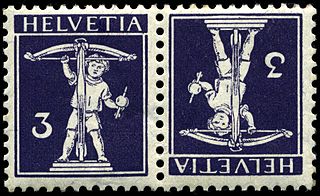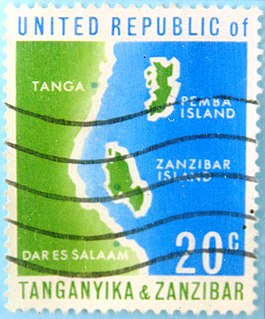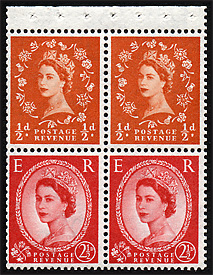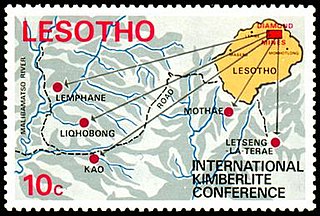


Posten, the Swedish mail service, was established in 1636 by Axel Oxenstierna, and by the 18th century it had been extended throughout the country.



Posten, the Swedish mail service, was established in 1636 by Axel Oxenstierna, and by the 18th century it had been extended throughout the country.
Sweden issued its first postage stamps on 1 July 1855, a set of five values denominated in skilling banco. These stamps depicted the coat of arms, were inscribed "SVERIGE", as have been all subsequent Swedish stamps, and were perforated. A printing error resulted in the Treskilling Yellow, a unique stamp that is currently the highest-priced in the world. The currency changed to öre and riksdaler on 1 July 1858, necessitating a new issue of stamps; the design was the same as before, but the stamps slightly smaller.
A new design that included a reclining lion appeared in 1862, but it was used only for 3 öre, 17 öre, and 20 öre values before being superseded in 1872 by a design featuring a large numeral in a round frame. The numeral issue included Sweden's first bi-colored stamp; the 1-riksdaler value was printed in bistre and blue, and the center design was the Three Crowns of the royal arms. The numerals continued in use for nearly twenty years, the main change being the replacement of the riksdaler stamp with a 1-kronor value in 1878 (five years after the introduction of krona).
The monarch made a first appearance on stamps in 1885, in the person of Oscar II, who was depicted in profile on a 10 öre value. The following year the practice began of printing a posthorn on the back of each stamp, underneath the gum. In 1889 a shortage of 10 öre values necessitated the surcharge of 12 öre and 24 öre numerals.
In 1891 a new definitive series featured bi-colored numerals for low values and a profile of Oscar II for the 5 öre and up. On 26 October 1903, Sweden's first commemorative stamp came out; a 5-kronor value depicting the Stockholm Post Office on the occasion of its opening.
A new series of 1910 used an arms design for low values, and a full-face portrait of King Gustav V. Additional surcharges were needed in 1918 before new stamps of the series could be printed. 1920 saw the introduction of coil stamps using a lion design and a new portrait of Gustav, along with a crown and posthorn design for larger denominations, as well as a commemorative depicting Gustavus Adolphus and marking the 300th anniversary of a precursor mail route that ran from Stockholm to Hamburg. These and subsequent Swedish issues were usually issued in both booklet (or sheet) and coil form.
During the 1920s, the 1920 definitives were gradually supplanted by a new series with a 3/4 profile of Gustav. In 1924, the Universal Postal Union celebrated its 50th anniversary and its Congress was held in Stockholm, so Sweden issued two series marking it, the first with a view of the Stockholm skyline, and the second with two designs; a postrider watching an airplane, and a carrier pigeon over a globe. Both sets were primarily aimed at collectors, but are nevertheless prized today.
Another major commemorative set in 1936 marked the 300th anniversary of the postal service with 12 values each with its own design noting some aspect of Sweden's postal history to date.
In 1939 a new series used a profile of Gustav for lower values, and the Three Crowns for higher; the crowns design continued in use into the 1960s. Meanwhile, the pattern for commemoratives was to issue about 3-4 each year, typically a single design in two denominations, with the lower value available in both booklet and coil form, and the higher as a coil stamp only.
Gustaf VI Adolf appeared in profile from 1951 on.
Czesław Słania began doing engraving for the post in 1959, and so became well known for work of exceptional quality.
The definitives of 1967 were a major departure from tradition. Instead of portraits of the king, the 18 designs encompassed a wide variety of subjects, including wildlife, scenery, daily life, history, and legend, each realized in radically different styles.
| Wikimedia Commons has media related to Stamps of Sweden . |

The krona is the official currency of Sweden. Both the ISO code "SEK" and currency sign "kr" are in common use; the former precedes or follows the value, the latter usually follows it but, especially in the past, it sometimes preceded the value. In English, the currency is sometimes referred to as the Swedish crown, as krona literally means "crown" in Swedish. The Swedish krona was the ninth-most traded currency in the world by value in April 2016.

The postal and philatelic history of Canada concerns postage of the territories which have formed Canada. Before Canadian confederation, the colonies of British Columbia and Vancouver Island, Prince Edward Island, Nova Scotia, New Brunswick and Newfoundland issued stamps in their own names. The postal history falls into four major periods: French control (1604–1763), British control (1763–1841), colonial government control (1841–1867), and Canada, since 1867.

This is a survey of the postage stamps and postal history of Iceland. Regular mail service in Iceland was first established by a charter of 13 May 1776, and on 1 January 1873, Iceland issued its first postage stamps. The design was the same as for the Danish numeral issue of the time, denominated with values ranging from 2 to 16 skilling, and inscribed ÍSLAND. All are scarce or rare, and used copies are especially hard to find.

This is a survey of the postage stamps and postal history of Switzerland.

This is an overview of the postage stamps and postal history of Denmark.

The story of the postage stamps and postal history of Tanzania begins with German East Africa, which was occupied by British forces during World War I. After the war, the territory came under British rule, was named Tanganyika and issued stamps under that name until after a union with Zanzibar in 1964.

Greece's first postal service was founded in 1828, at the time of Greek independence from the Ottoman Empire. This initial service continued mail delivery and, later, the issuing of postage stamps until 1970. It was then succeeded by the Hellenic Post S.A., which remains Greece's official postal provider. The first Greek stamps were issued in 1861; by then, the postal service had expanded to operate 97 branches.

This is a survey of the postage stamps and postal history of the postal areas Netherlands Antilles as well as its predecessor Curaçao. The area consisted of the islands Bonaire, Saba and Sint Eustatius as well as Sint Maarten, Curaçao and Aruba.

Gabon is a country in west central Africa sharing borders with the Gulf of Guinea to the west, Equatorial Guinea to the northwest, and Cameroon to the north, with the Republic of the Congo curving around the east and south. Its size is almost 270,000 km² with an estimated population of 1,500,000. The capital and largest city is Libreville.

The history of the postage stamps and postal history of China is complicated by the gradual decay of Imperial China and the years of civil war and Japanese occupation in the 1930s and 1940s.

Postage stamp design is the activity of graphic design as applied to postage stamps. Many thousands of designs have been created since a profile bust of Queen Victoria was adopted for the Penny Black in 1840; some designs have been considered very successful, others less so.
This is a survey of the postage stamps and postal history of Macau.

The history of postage stamps and postal history of Malaysia, a state in Southeast Asia that occupies the south of the Malay peninsula and Sarawak and Sabah in the north Borneo, includes the development of postal services in these periods:
This is a survey of the postage stamps and postal history of Angola.

The Wildings were a series of definitive postage and revenue stamps featuring the Dorothy Wilding photographic portrait of Queen Elizabeth II that were in use between 1952 and 1971. The Wildings were the first and only British stamps to feature graphite lines on the back, and the first to feature phosphor bands on the face – both aids to automation. The stamps were also the first British pictorial high value stamps and the first to include regional emblems.
Denmark issued ten definitive airmail stamps between 1925 and 1934 in two distinct series. The 1st series, commonly called The Plow and Airplane was first issued in June 1925. These stamps were designed by Danish artist Axel Peder Jensen (1885–1972). The 2nd series was issued on June 9, 1934, and depicted an airplane over Copenhagen. The second series remained in use until after World War II.
The Federation of Rhodesia and Nyasaland, also known as the Central African Federation (CAF), was a semi-independent state in southern Africa that existed from 1953 to the end of 1963.

The postal system of Norway dates from 1647, when Christian IV of Denmark-Norway granted a concession to a private company who established the Postvesenet. The Postvesenet primarily provided a way for various parts of the country to communicate with the central government in Christiania. Although Norway came under rule of the Swedish king in 1815, the postal service remained independent of the Swedish post, and continued to gradually established routes throughout the country.

This is a survey of the postage stamps and postal history of Lesotho, formerly known as Basutoland.

The Series of 1902, also known as the Second Bureau Issue, is a set of definitive postage stamps in fourteen denominations ranging between one cent and five dollars, produced by the U. S. Bureau of Engraving and Printing and issued by the United States Post Office. Two denominations appeared in November and December 1902 and the other twelve were released between January and June 1903. These stamps were assigned the Scott Catalogue numbers 300 through 313. Also considered part of the series is a fifteenth stamp which appeared in November 1903—a second version of the 2¢ value, the original having faced severe criticism. This series, particularly noted for its exceptional ornateness and opulence of design, remained in circulation until late 1908, when it was superseded by the Washington-Franklin Issues.